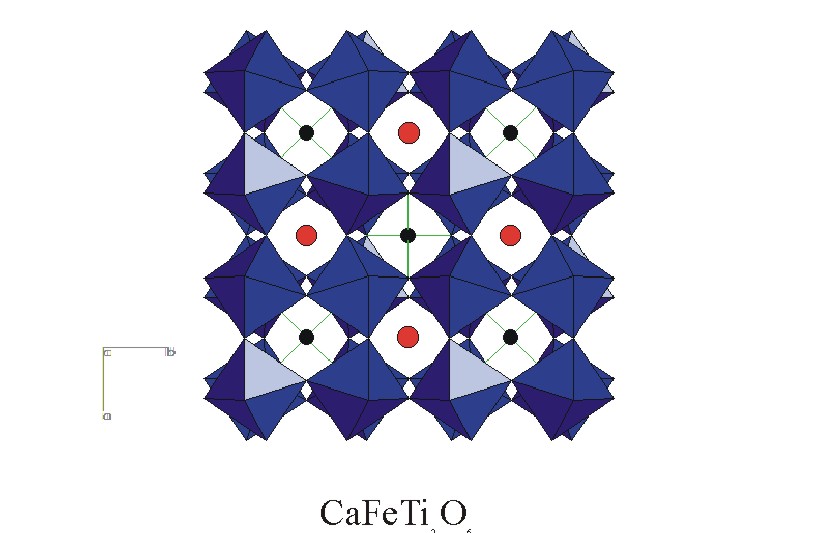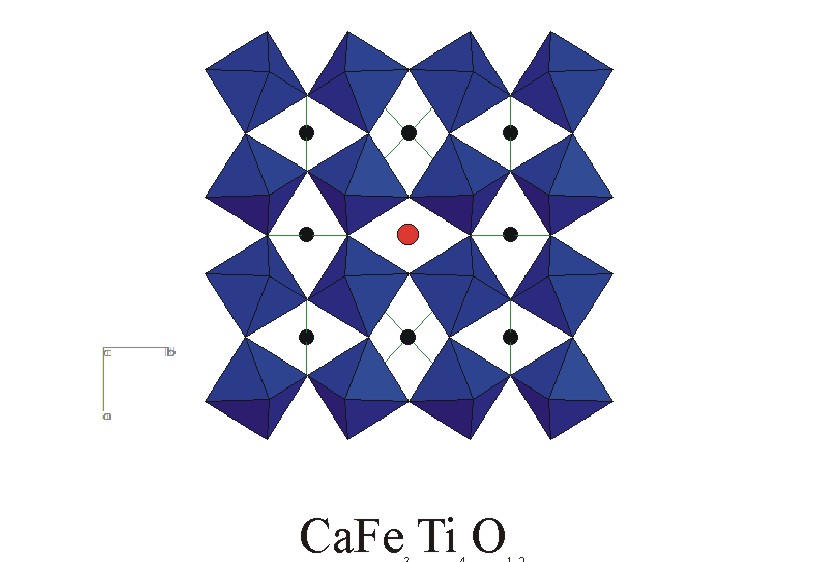

I found this in a high pressure run at Stony Brook. Alex Navrotsky had suggested looking for a solid solution between CaTiO3 and FeTiO3. She called it "the mother of all perovskites." I tried it out, and voila - there were compounds intermediate between these two at high pressure. It turned out upon detailed study that there were two line phases with compositions CaFe3Ti4O12, and CaFeTi2O6.
After many additional runs trying to purify and crystallize these materials, and with the collaboration of John Parise, I finally figured out what these beauties were. To this day this is one of my favorite findings. The structure of CaFeTi2O6 (above) was a new modification of perovskite, with space group P42/nmc. Sitting in Kennedy Airport one day waiting for a plane to Japan, I figured out how this structure was associated with the octahedral tilt system ******. This solved a discrepancy between the new structure and Glazer's original tabulation of perovskite symmetries.
The other compound (below) was isostructural with a series of compounds first found by Marezio. It looks similar to CaFeTi2O6, but differs in the details of the tilts and in the way the calcium and iron are ordered. The symmetry is cubic with space group I-3m.

Fe in both of these phases is truly acting like a transition metal, adopting square planar and tetrahedral coordination even at high pressure.
Thus the "Mother of All Perovskites" did exist, not as a solid solution, but as a pair of discrete phases with special octahedral tilts to accomodate the differing sizes of Ca and Fe!